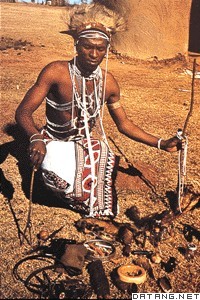2) Conceptual Art


观念艺术
1.
Conceptual Art and the Concept of Architecture Creation;


观念艺术与建筑创作中的观念
2.
Based on the great heritage ‘conceptual art’left: question, challenge, anti-cooperation, live-together sensibility: I would rather call ‘public art’as ‘art in public space’.
基于"观念艺术"为我们留下的宝贵遗产:置疑,挑战,不合作,共生:我更愿意将公共艺术定义为艺术介入公共空间(Art in publicspace)。
3) artistic concept


艺术观念
1.
There exists the question of unified tripartite: inherent faith, artistic concept and visual form.
艺术一旦进入当下,与公众相遇,获得当代艺术的境遇,就不得不接受当下批评话语的审问,这里存在着三方面统一的问题:内在信念、艺术观念、画面形式。
5) concept art


观念艺术
1.
The paper discussed formative inevitability of ornamentation functions of easel painting and counteraction of the concept art against ornamentation functions,further analyzed problem in modern painting and finally pointed out counteraction of the concept art against ornamentation functions of easel painting to some extent has an effect on main body s value of painting in cultural meaning.
文章论述了架上绘画文饰功能形成的必然性以及观念艺术对其文饰功能的消解,并在此基础上试图分析所谓当代观念绘画存在的一些问题,并进而指出观念艺术对于架上绘画文饰功能的这种消解在一定程度上影响架上绘画在文化意义上的主体价值的存在。
6) artistic conception


艺术观念
1.
This text discusses on the birth of some wholly new poetic and artistic conceptions with the Buddhist Zan (佛禅) philosophical background, such as "妙观逸想" come from "万法平等", "如春在花" translated from "周遍含容", the explanation of art illusion with "如幻三昧", and the conversion into"出位之思" from "六根互通", etc.
本文讨论了宋诗人在佛禅哲学背景下所产生的若干全新的诗学概念和艺术观念,如由“万法平等”观生发出“妙观逸想”,将“周遍含容”观表述为“如春在花”,以“如幻三昧”解释艺术幻觉,以“转物”思想强化拟人主义,由“六根互通”转化为“出位之思”,进而从“法眼”与“诗眼”相通的角度揭示了北宋后期诗学的重要特色。
2.
SU Shi,a great man of letters in the history of Chinse literature,has exercised important influences on the development of Chinese art with his poetic literary works and artistic conception.
苏轼是中国文学史上伟大的文学家,他的诗文创作及其艺术观念对中国艺术的发展产生了重要的影响。
补充资料:巫术
| 巫术 witchcraft;sorcery 原始社会早期的一种准宗教现象。外在形态与法术相似,但产生略晚于法术。巫术的特点是在其实践行为的指导思想中已经存有某种超自然力的观念,巫术活动正是希望能以这种超自然力来影响和支配外在事物,防范异己力量的危害,实现自我保护,即达到人们求福禳灾之目的。行使巫术者通常称为巫或巫师,在中国古代亦有巫觋等名称。他们被认为拥有或可以运用超凡力量起到奇异作用。原始巫术最初具有自发性质,尚未形成神灵观念及与之相关的敬拜和祈祷活动。但在其后的发展中,巫术实践的人为因素和主观意向愈益明显,人们的神鬼观念逐渐完善,巫祝形式也出现职业化和民俗化等倾向。有人认为,从巫术到宗教的过渡过程中曾形成一种介乎二者之间的巫教。巫术的实践操作一般包括念咒、占卜、唱颂、歌舞、祈求、祭祀、招魂、驱鬼、施蛊、避邪和禁忌等。而按巫法巫技之实践方式则可归为模仿巫术和接触巫术两类。
|
说明:补充资料仅用于学习参考,请勿用于其它任何用途。
参考词条
